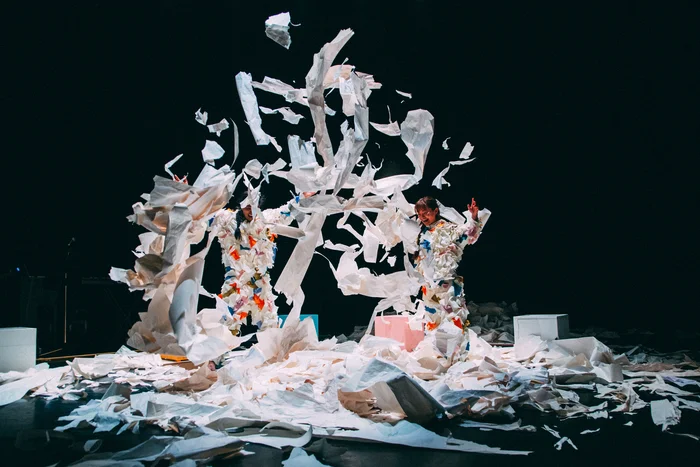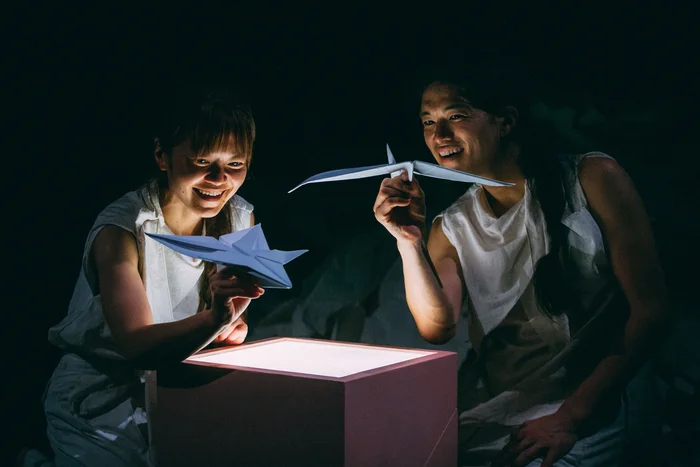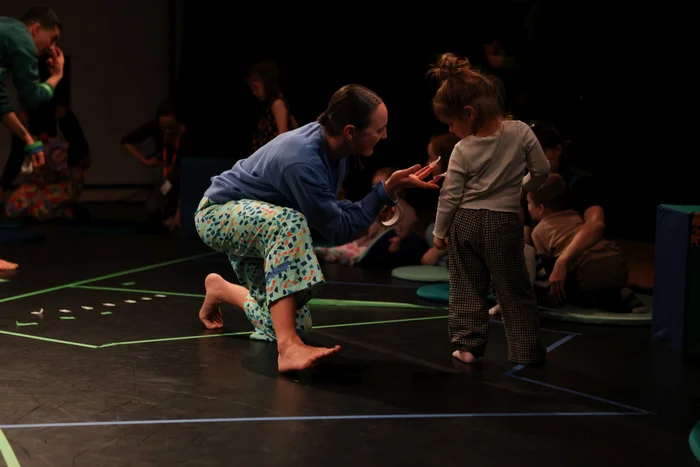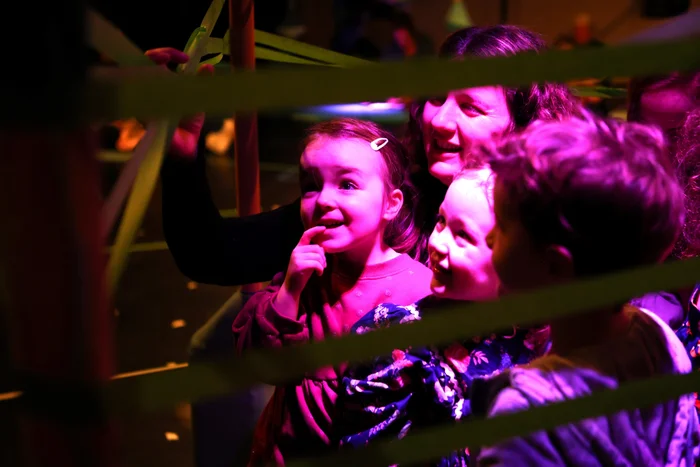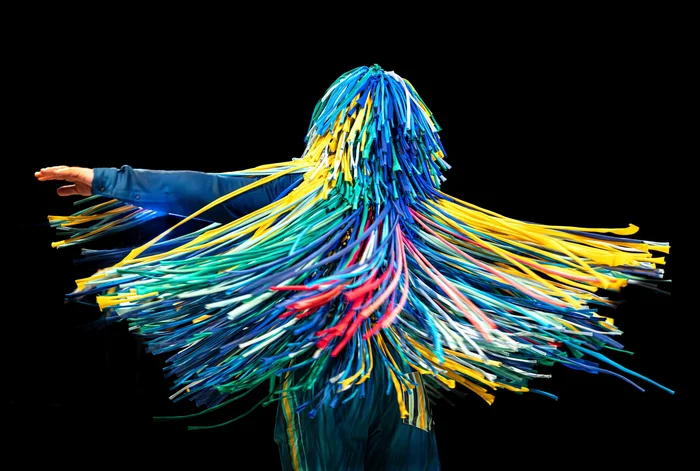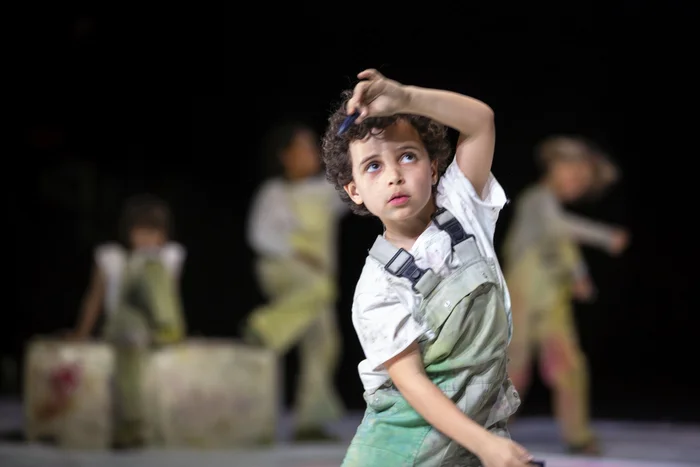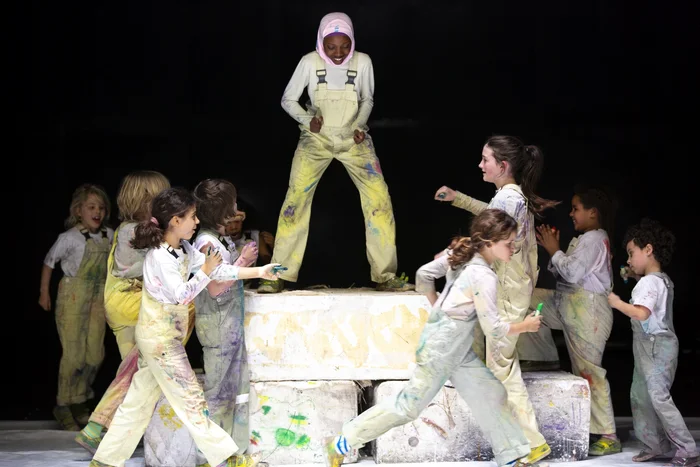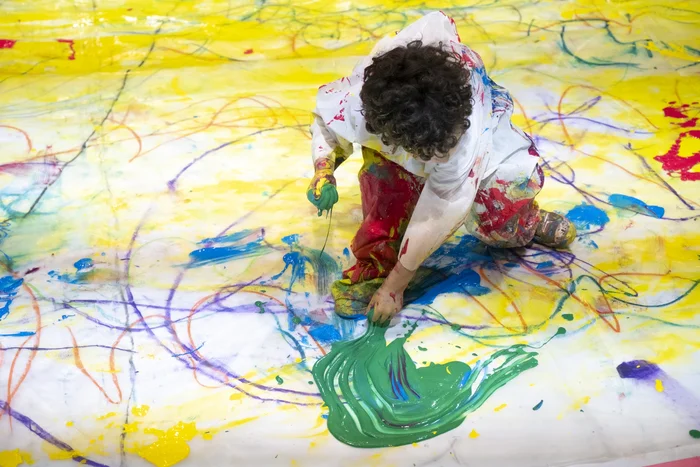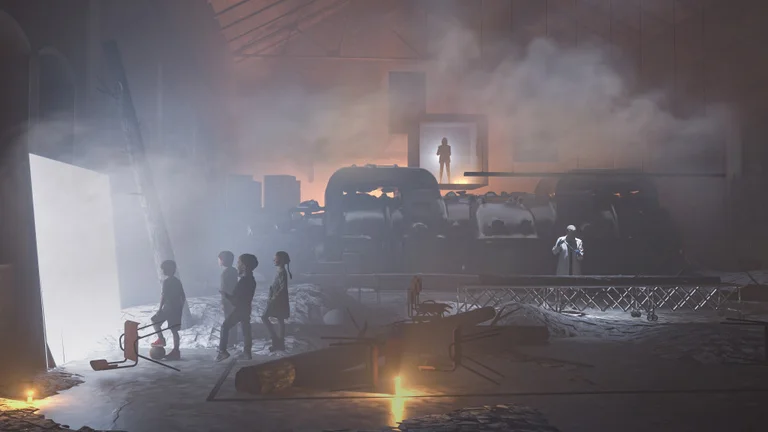
“Whoosh! – You get drawn straight in”
Britta Schünemann is head of dramaturgy at the Ruhrtriennale and the Junge Triennale. A conversation about the benefits of materials on stage, about anarchic theatre for young audiences, about GenZ and the post-war generation.
Interview: Sarah Heppekausen
kultur.west: Crayons, paint, paper and colourful adhesive tape – this year's theatre for young audiences is making use of lots of materials. Why does it work so well in theatre for children?
Britta Schünemann: Materiality always has a tactile quality that makes it very accessible. This is especially true for children, who like to explore everything; materials are therefore ideal for approaching topics. In our two interactive pieces for under-six-year-olds, the children are involved in the action. In Club Origami by Takeshi Matsumoto, the young audience will fold their own paper artworks at the beginning, which will be integrated into the story and the stage design. In The Sticky Dance, the children can – if they want to– join in on stage. There, areas are defined by adhesive tape. There are bouncy games and the children set their own rules, just as they remember from their own childhood. Rosie Heafford and Takeshi Matsumoto's company have focussed on a neurodivergent audience, and the atmosphere on stage is very intimate and protected. And here, too, you feel like joining in because you can take something into your own hands. This brings the pieces to life and connects them to the children's world.
„When I saw WASCO! in Belgium, I immediately wanted to join them on stage.“
In WASCO! by Voetvolk, 7 to 13-year-olds dance with crayons and buckets of paint, creating a painting on their own and even flinging each other across the stage as paintbrushes.
I am a big fan of this production. When I saw it in Belgium, I immediately wanted to join them on stage. It happens so quickly - whoosh! - You get drawn straight into it.
The company, led by choreographer Lisbeth Gruwez and musician Maarten Van Cauwenberghe, comes from Belgium. In general, a lot of experimental, risk-taking and anarchic theatre for young audiences comes from the Benelux countries, including Scandinavia. Are theatre-makers in these countries more courageous?
The dance theatre piece WASCO! is one of the best examples of this, because you can see the self-efficacy of the children on stage. The choreographers have developed the movement vocabulary together with the children, nothing is imposed from above. When the youngest performer moves naturally to free jazz music, you're moved to tears. There is no adult on stage, the children act independently. That is very fascinating. One key certainly lies in the understanding of art: children are not perceived as a precursor to adulthood, but as fully-fledged people with their own needs and perspectives – on stage and in the audience. This gives rise to anarchy and a willingness to take risks.
„The result will be something innovative and experimental that is based on the history of this industrial location and is probably only possible at the Ruhrtriennale.“
In the world premiere of GenZ Don't Cry, young people also perform on stage themselves. The sound Sounddramaturgien-Kollektiv, the author Mehdi Moradpour and the set designer and co-director Wolfgang Menardi are developing an immersive 3D sound theatre about Generation Z together with them. How did the idea for this topic and this format come about?
Our youth music theatre project GenZ Don't Cry ties in with We Are the Lucky Ones from our music theatre section. This co-production by the Dutch National Opera and the Ruhrtriennale draws on around 70–80 interviews with Europeans born between 1940 and 1949. These passages from their everyday lives were used to create the libretto. For GenZ Don't Cry, we also conducted interviews with young people born between 1995 and 2010. We spoke to school classes in Duisburg and people in their twenties. Ten young people from the Ruhr area will perform on stage and are involved in the writing process, providing feedback and inspiration for song titles, etc. Gîn Bali is a great musician, DJ and educator who will create the music for the evening. The Sounddramaturgien-Kollektiv works in a highly experimental way. Based on the observation that headphones are now an integral part of our everyday lives, they use a binaural microphone on stage. This allows us to hear what the microphone wearer on stage hears in an immersive way. Sound can be many things, including Julia Nussbaumer's costumes. I think it's going to be really cool!
The production will take place in the Turbinenhalle at Jahrhunderthalle in Bochum. Like most of the Ruhrtriennale's venues, this is a place with a visible history. For example, two historic turbines can still be seen there.
In this production, we are actually working in a very site-specific way; the Turbinenhalle is an integral part of Wolfgang Menardi's stage design. The result will be something innovative and experimental that is based on the history of this industrial location and is probably only possible at the Ruhrtriennale. Space and sound create a completely new connection.
In GenZ Don't Cry, we hear from today's 15 to 30-year-olds. In We Are The Lucky Ones, we hear from the post-war generation. What do we learn from them?
Both generations are subject to many clichés in social debates. The post-war generation is said to have been well off and to have enjoyed the fruits of their parents' labour. You're lazy and stuck on social media, they say about Gen Z. What is always lost sight of is the conditions under which the generations grew up. We Are the Lucky Ones spans eight decades, providing a kaleidoscopic overview. We hear and see the different stages of life, filled with personal experiences. There are some very touching moments. In Gen Z Don't Cry, we asked open questions about a range of topics: Do you feel you are part of a generation? How do you view them? In what ways does Gen Z stand out from other generations? What annoys you about your generation? The piece also covers wishes, dreams for the future, and fears. But it's not documentary theatre. It will be presented artistically. We will present two plays, each focusing on a different generation.
The interview appears in Kultur.West as part of the Ruhrtriennale Special 2025. You can read the magazine in full length here: www.kulturwest.de/specials/ruhrtriennale-2025
